Day 3 Thursday, May 31, 2007
Aswan to Edfu
The Aswan Dams
Day three of our journey began with meeting for breakfast at our round table for seven. We are in the city of Aswan & our tour for the day is visiting the High Dam.
Here we are on the High Dam (with the earlier dam as a low vertical line in the far distance). The pavement is polished Aswan granite.
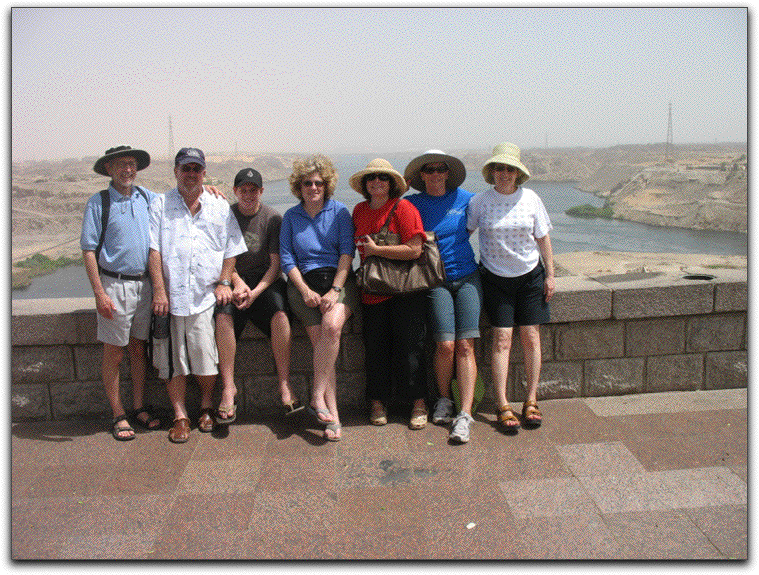
The English speaking passengers on the ship gathered together in the lobby to meet our guide Mahmoud, aka, Mohammad. He gave our group the name Isis which means Goddess of Love, kindness & faithfulness. We hopped on the bus and off we went. In 1960 Egypt began building the high dam which brought in many new generations of people and the prosperity of the city grew. According to Mahmoud, there seem to be no negatives to the dam. However, it has (so some suggest) changed the salinity of the Mediterranean sea as well as the nature of life along the Nile. Some of the industries here are power plants, steel mines, sugar and the fishing trade. There are many Nubian villages that dot the banks of the Nile here. These quiet, gentle people comprise 60% of the population here in Aswan. Mahmoud told us that the name Nubia means Land of Gold. This particular city is a potpourri of beauty and despair. Unfinished buildings house small stores, restaurants and other various vendors surrounded by garbage. And then just a short distance away you will see the most beautiful desert land, a golden sand that looks as soft and inviting as warm, butterscotch pudding.

Mahmoud continued to tell us much information which I tried feverishly to write down. I knew that within moments of hearing what he had to say, I would forget every word.
Philae
To get to Philae Temple
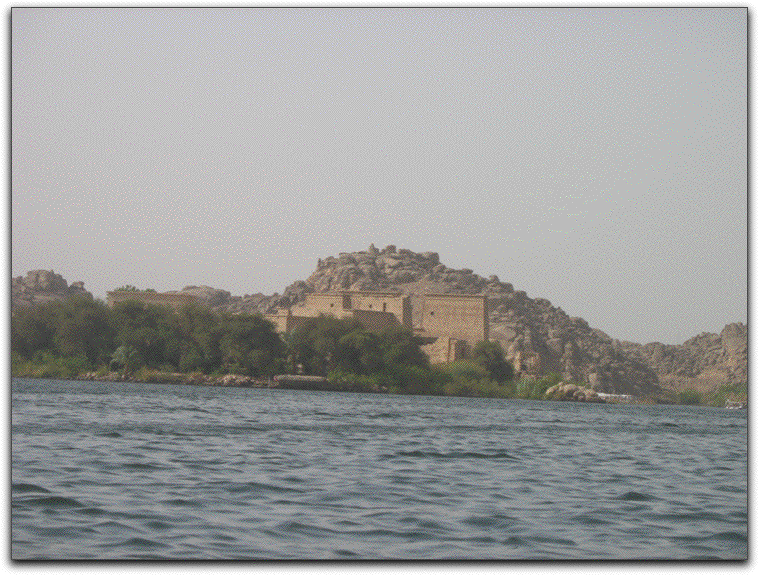
we took a small boat over to the man-made island. What a miracle this place is. It’s very humbling to look at what can be accomplished without all the advantages of modern machinery.
Building the Aswan High Dam flooded a tremendous area including much of the land on which many ancient temples had been built. Among these were the most famous, Abu Simbel. Each of the stones in these temples had to be marked (numbered, still faintly visible near Debbie's feet)
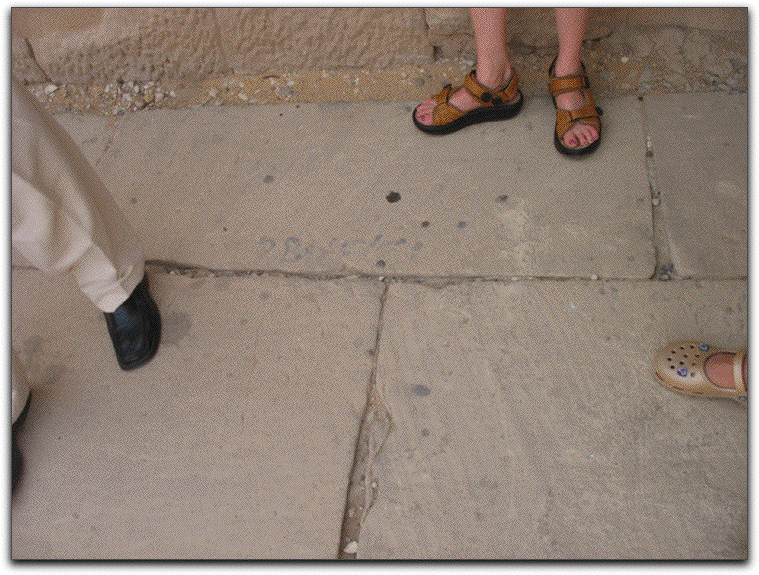
and then put back where it belonged in relation to its neighbors in the new setting. In the case of Philae, an entire island had to be leveled first to accept the old temple. All that remains of the old island is the three markers (one tall and two very short) visible below that represent the “lock” that was built around the earlier island so the water could be drained to remove the temple.
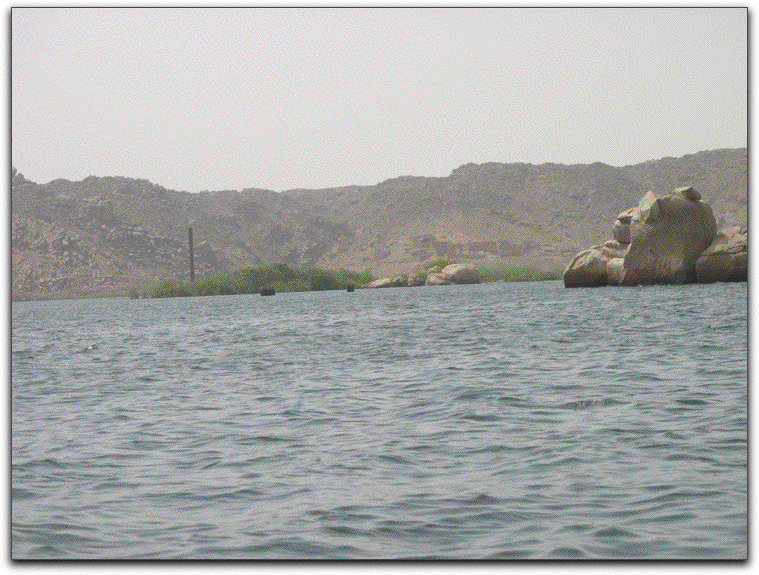
The temple had been built by the Hellenist Ptolemaic rulers of Egypt. It looks ancient, but it only dates to “late antiquity". Inside is an even more recent religious structure, a Coptic altar where part of the temple had been transformed into a church.
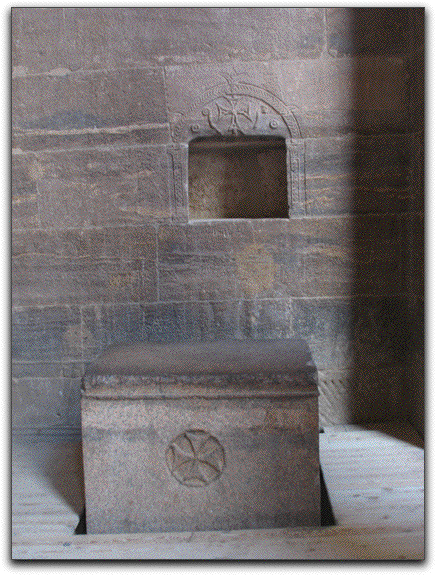
Moving the temple was a project of UNESCO.
A view of the island as we left (around the other side):
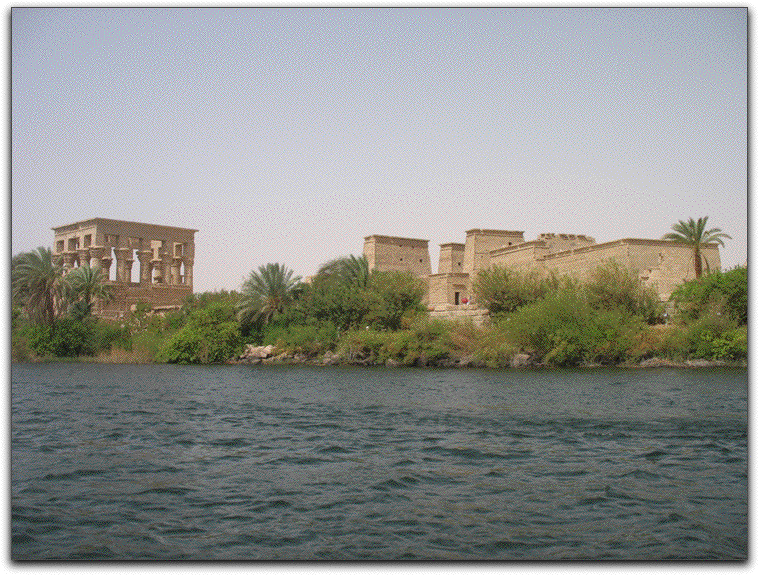
From Philae you can see the original dam.
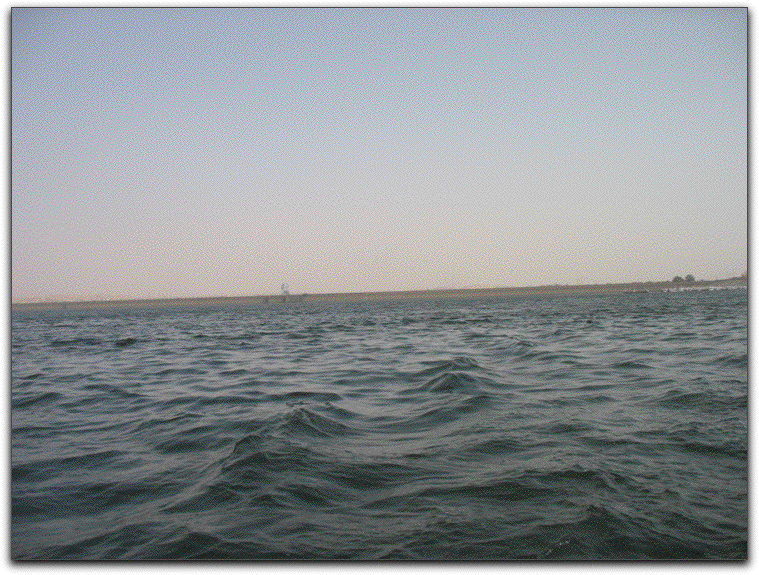
We crossed it a couple of times. The first cataract of the Nile is clearly visible as you cross.
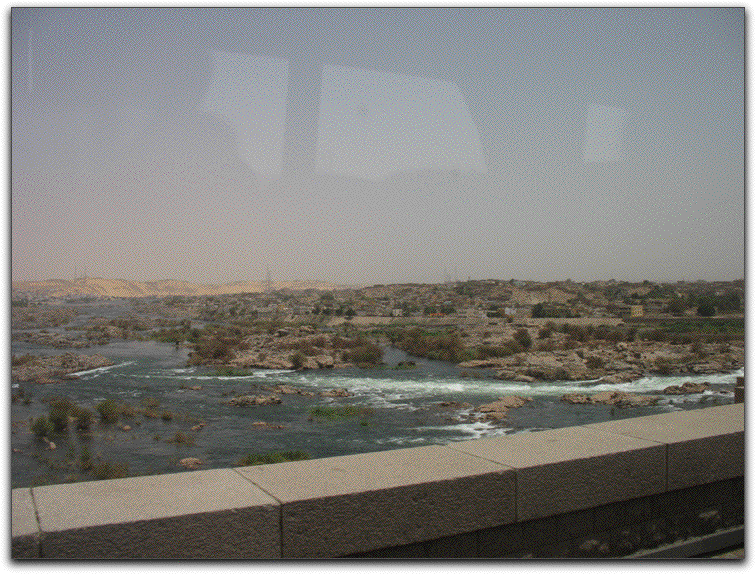
Our next destination is to watch a demonstration of alabaster stone carving and what Mahmoud calls the “Temple of Relief” which happens to be inside a store.
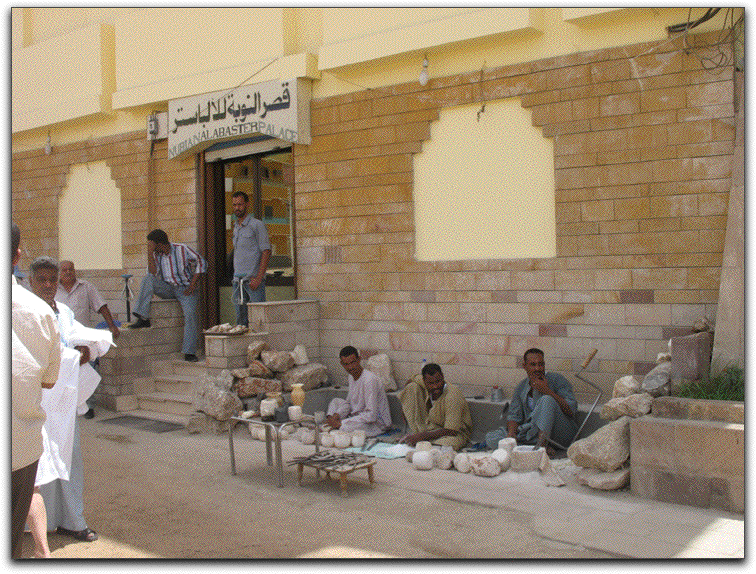
I’ll tell you, if these guys worked at Nordstrom’s they’d make a killing in commissions. Here in Egypt the “pyramid” system works in full force. Time for lunch, YAHOO!
Kom Ombo
We returned to the Sonesta Moon Goodess for lunch.
I love this place despite the heat, shmutz and very aggressive salesmen. We get back to the ship and Janet has finally received her luggage. Little did I know that this was the first of three celebratory events for this evening. The remainder of the afternoon was spent resting and watching the banks of the Nile slip by us.
After we had been fed and watered, we are off, cruising down (north) the Nile. If you did not see the electric power lines faintly in the distance, you would hardly know that thousands of years had passed.
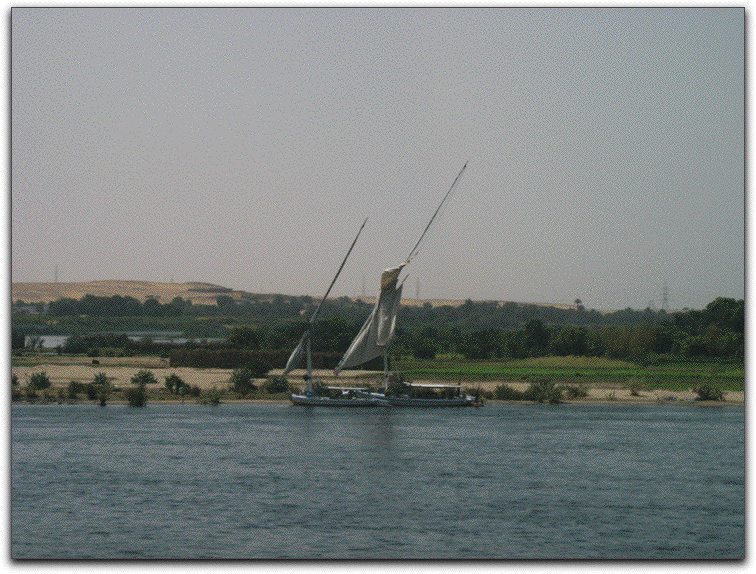
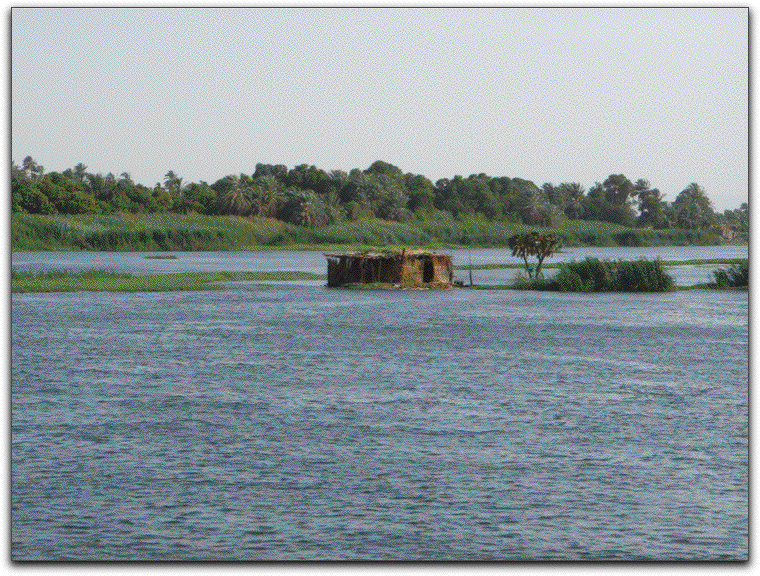
We were headed to the Kom Obo Temple where we learned that this was the only Temple dedicated to two gods, the falcon Horus and the crocodile Sobek. It was believed that the crocodile carried the Nile in its belly and when the people saw it, they knew a flood was coming which meant plenty of water and fertile soil to grow crops.
When in Cairo, we could not take photos of the mummified crocodiles in the museum. Here there was no problem. This crocodile (the size of an average man) is about a quarter the size of the ones in Cairo!
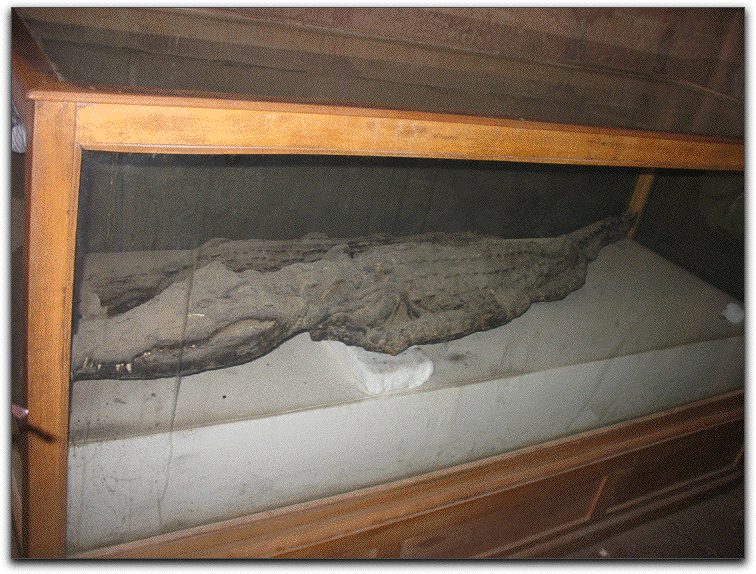
Also at this temple we saw carvings of birthing chairs.
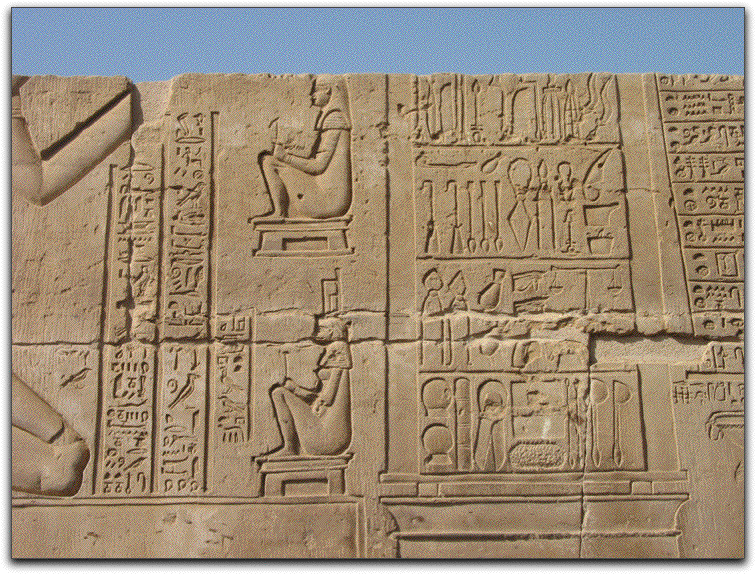
The temple may have been a “medical school”.
We cruised on to Edfu as the sun set.
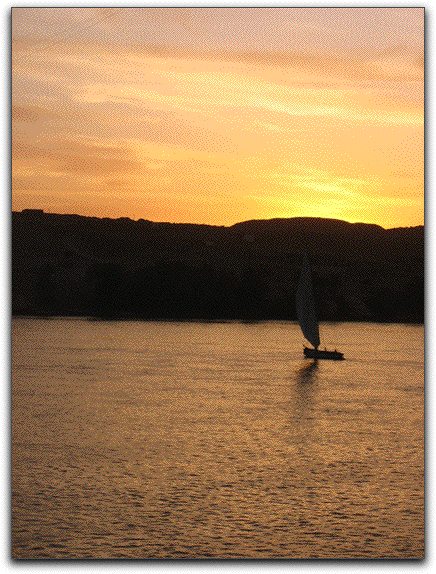
Edfu
Before dinner Sheryl had a bottle of wine opened and with a smile on her face that only a proud mother can have, told us all that Jeff had passed his real estate exam. The expression on his Dad/Bill’s face was priceless. Not only was he happy but he then exclaimed; “now you can work.” The staff brought out a cake in celebration of Bill’s birthday (coming up in June) with much excitement, drumming and singing.
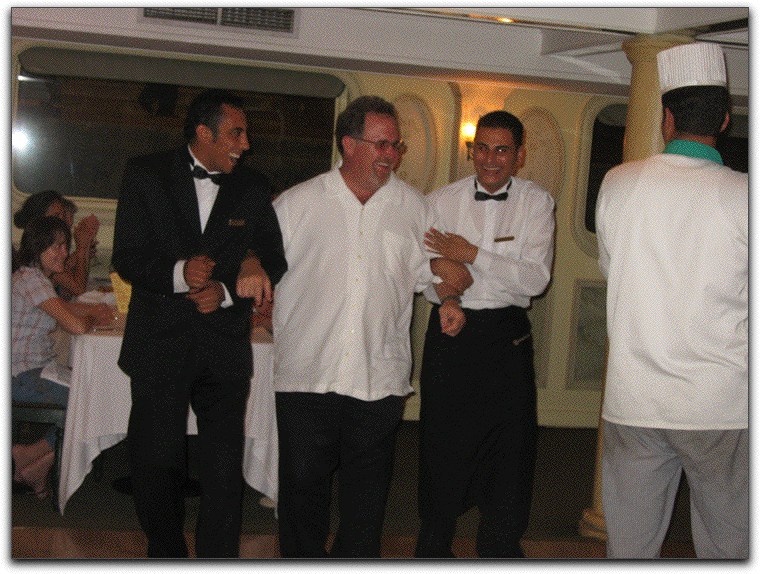
Then the cherry on the sundae, Bill told us all that he has decided to convert to Judaism. So on the following day June 1, 2007, the Egyptian population of Jews would be increased to a whopping 301.
By Anita Szawielenko (additional info by MH)
Additional photos thanks to Sheryl Rowling.
start || back || next



















